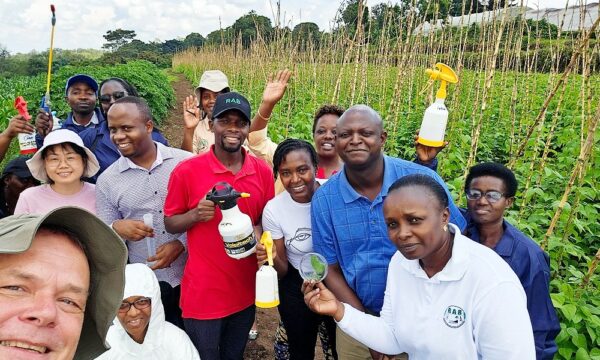
Copyright: CABI. Credit: Sven Torfinn, Panos Pictures
A new report supports the fact that invasive species have the potential to undermine global food security and sustainable development, a vital statement supported by Goal 15 of the Sustainable Development Goals which states that we need to: introduce measures to prevent the introduction and significantly reduce the impact of invasive alien species on land and water ecosystems and control or eradicate the priority species.
Invasive species are a plants, fungi or animals that are not native to a specific location (an introduced species) which spread and can cause damage to the environment, human economy or human health. If not managed sustainably, these invasive species often negatively impact natural biodiversity and ecosystems, and consequently, farmers’ livelihoods.
Rapid globalization and increased trade is compounding this problem. As agricultural and non-agricultural products move from one country to another, the risk of introducing invasive species to non-native regions is also increased.
Research carried out by Dean Paini (senior research scientist – CSIRO) on the Global threat to agriculture from invasive species was carried out across 124 countries. He found that 40 of the countries in the study had the possibility of being invaded by at least one of the 1,297 invasive pests reviewed. The research identified a correlation between the type of crops grown in a country, the level of trade with other countries and invasive pests present in trading countries. He reported that China and USA were the greatest potential sources of invasives species due to the scale of their agricultural production and high levels of trade with other countries.
The report found that countries in sub-Saharan Africa were more vulnerable to the impacts of invasive species. This is because of their less resilient farming systems and increased reliance on the natural ecosystem. Impacts of invasive species are mostly experienced by rural farmers but it’s also felt at the national economic level as agriculture contributes significantly to their Gross Domestic Product (GDP). It is therefore pertinent to understand the source, nature and method of spread of invasive species so that they can be prevented, mitigated or managed – if they’re already established.
We at CABI have launched a global initiative to raise awareness of the global threat of invasive species on food security, trade, sustainable development and rural livelihoods – see our dedicated website. CABI has over 100 years of scientific expertise and knowledge on invasive species and we are using this knowledge to help tackle the worst invasive species across Africa, Asia and Latin America. For instance, Opuntia stricta – an invasive cactus – has colonized vast grazing areas in Kenya, resulting in minimized grazing land and the death of livestock. We have therefore used our scientific expertise to help address this invasive by introducing a sap-sucking bug (Dactylopius opuntiae) which is known to feed only on Opuntia stricta without causing harm to any other native plant species. This bug has previously been successful in controlling Opuntia stricta in South Africa and has already started being effective in addressing the same issues in Kenya.
As sustainable agriculture and rural development is at the core of our work, we aim to tackle invasive species by improving the knowledge of local people on the different methods of preventing the arrival and spread of invasive species. We also want to support agencies responsible for early detection and eradication of invasive species as well as mitigate invasive species through sustainable measures. This will ensure that invasive species are addressed without causing further harm to the environment and livelihoods.
1 Comment
Leave a Reply
Related News & Blogs
Biological control in action: Zambia’s field days on fighting fall armyworm
Experts from CABI recently held two field days and an expo in Zambia, showcasing innovative approaches to pest management to 584 farmers, agro-dealers and other stakeholders to help raise awareness of approaches to tackle the invasive fall armyworm (Sp…
11 June 2025





[…] plants in the tropics). In South East Asia “Invasive species are threatening forest habitats (Invasive Species The livelihoods threat). Properly managing invasive woody plants is very much needed in the restoration of biodiversity […]